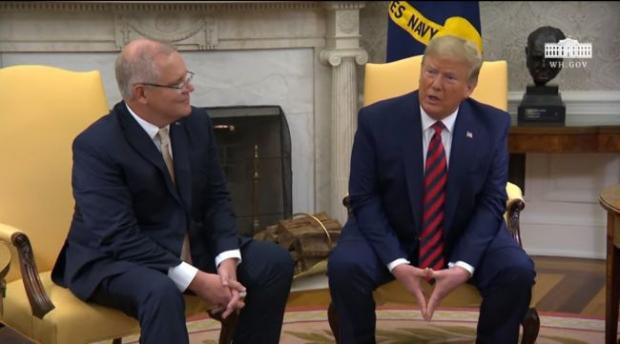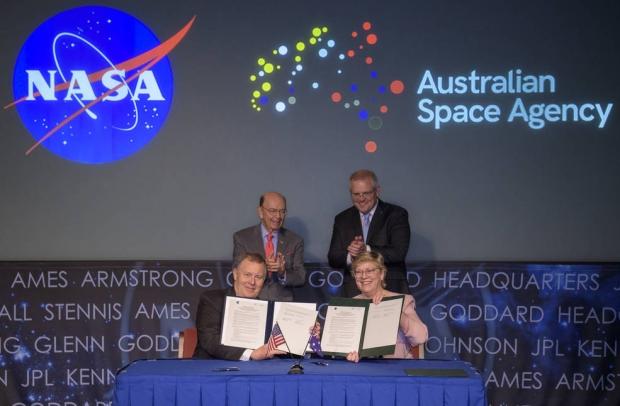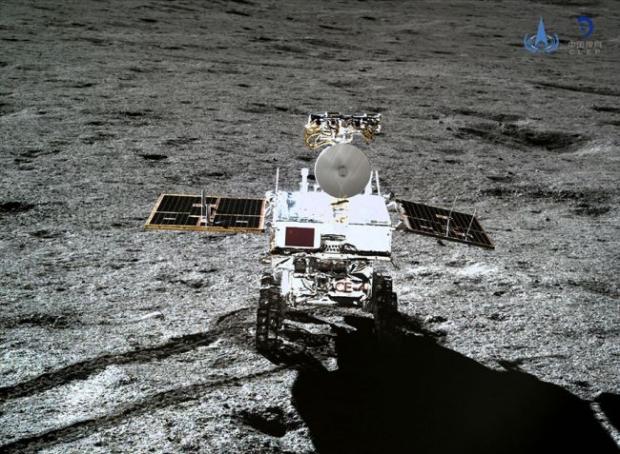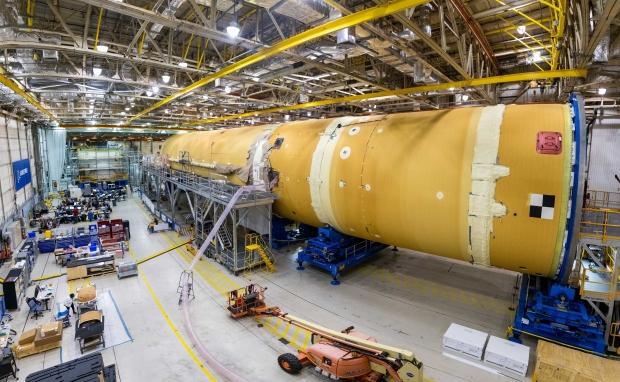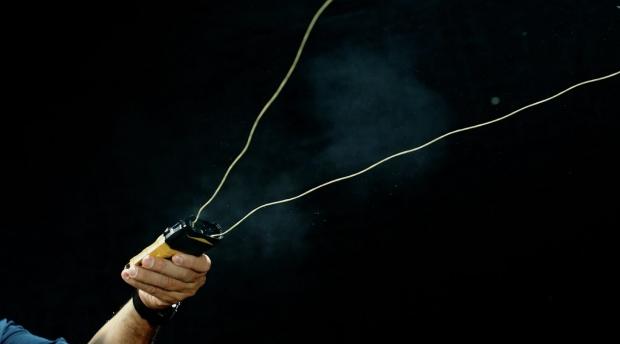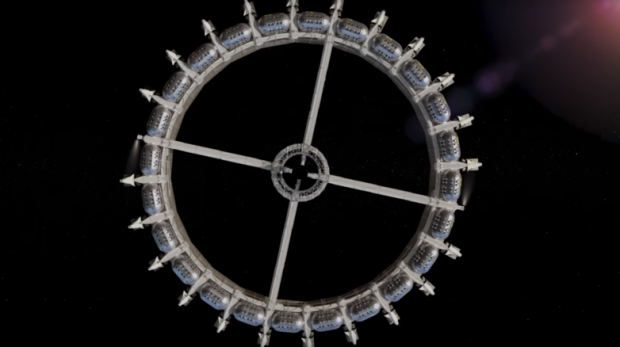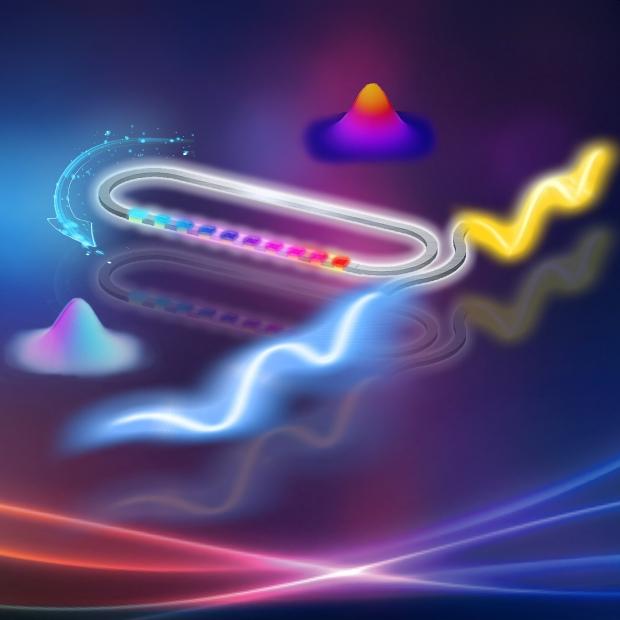Science, Space, Health & Robotics News - Page 388
Trump says next Moon mission is 'not so exciting', real target = Mars
U.S President, Donald Trump recently had a meeting with the Australian Prime Minister, Scott Morison and discussed the future of space exploration.
During that meeting, Trump spoke openly about each of the countries roles that they will be playing when it comes to space exploration via the Moon and eventually Mars. He said that "We're stopping at the moon. The moon is actually a launching pad, That's why we're stopping at the moon. I said, 'Hey, we've done the moon. That's not so exciting.' So we'll be doing the moon. But we'll really be doing Mars."
Trump also reinstated that "We're going to Mars" and that U.S space program will eventually take them there, its just a matter of securing the Moon first. For those that didn't know, NASA plan on leaving Earth by 2024 as apart of their Artemis lunar mission, more on that here. Additionally, NASA will be working with other space exploration companies such as Jeff Bezos' Blue Origin and Elon Musk's SpaceX.
Continue reading: Trump says next Moon mission is 'not so exciting', real target = Mars (full post)
Venus had an 'Earth-like' climate, possible life for billions of years
According to NASA, their Pioneer Venus mission reached Venus back in 1978 and the craft discovered that Venus showed signs of past oceans on its surface.
Since that mission, NASA has discovered many more things about Venus' surface which gave them more data to be able to understand how the planet went from being "Earth-like" to what it is now. The data indicates that around 700 million years ago Venus experienced a Greenhouse Effect event that caused the now hot place it is. Which means that 2 to 3 billion years Venus could of had a habitable environment fit for life.
After the forming of Venus its development process was extremely similar to that of Earths, which means that the planets atmosphere at one stage consisted of a lot of carbon dioxide. Venus then went onto experience a massive outgassing event which is yet to be discovered by scientists. It is believed that this event was geological and was so massive that it caused 80% of the planet to resurface.
Continue reading: Venus had an 'Earth-like' climate, possible life for billions of years (full post)
Australian government joins NASA's next Artemis Lunar & Mars missions
Australia has formed and alliance with the US in NASA's upcoming space missions aimed towards re-landing on the Moon and eventually Mars.
Australian Prime Minister Scott Morrison recently announced that Australia will be become involved with the United States' Artemis lunar program that targets a Moon landing by 2024. The announcement came out of the NASA Headquarters at a ceremony that was held in Washington. NASA Deputy Administrator, Jim Morhard, and Head of the Australian Space Agency, Megan Clark sat down and signed the new agreement (image above).
The agreement states that Australia will contribute to aspects of the lunar mission that they have a mutual interest in, such as "robotics, automation, and remote asset management". Morrison also stated that he will attempt to triple the Australian Space Agency budget to support the Artemis mission as well as the Moon to Mars mission that is planned for the future. Jim Morhard said "We are honored by today's statement and the commitment of our friends from Australia to support us in our mission to return to the Moon by 2024 with the Artemis program".
Continue reading: Australian government joins NASA's next Artemis Lunar & Mars missions (full post)
Russia and China tag-team together to safely make it back to the Moon
Space agency across the world have decided its time that humans go back to Moon, not only are NASA planning lunar missions but so are Russia and China.
For those that didn't know, Russia was the first country to achieve a successful soft landing onto the Moon's surface, that was back in 1966. China within the last decade also managed to achieve a soft landing and now both Russia and China have agreed to work together for future lunar missions.
China's Chang'e 5 will be launching next year and it is designed to be China's first sample-return mission. After Chang'e 5, Chang'e 6 will fetch a sample from the lunar south pole in 2023, Chang'e 7 will do a more in-depth exploration in that area. Russia on the other hand is on a different schedule, according to Dmitry Rogozin, the head of Roscosmos Space Agency, Russia plans involve a 2024 orbiter, a 2028 sample-return mission and human flights sometime in 2029 - 2030.
Continue reading: Russia and China tag-team together to safely make it back to the Moon (full post)
NASA head wouldn't bet his child's birthday on Moon landing by 2024
With NASA in full swing towards meeting their White House imposed goal of landing back on the Moon by 2024, one of the companies heads has actually doubted the projects success.
Kenneth Bowersox, who is an acting associate administrator for human exploration spoke to a Congressional subcommittee, saying that "I wouldn't bet my oldest child's upcoming birthday present or anything like that." For those that don't know, the Trump administration urged NASA back in March to speed up its Moon-landing plans by four years, solidifying the now 2024 landing date.
Bowersox continued and said that even though he doubts that NASA will be able to achieve the goal of landing back on the Moon by 2024, its still good that the space exploration company has a "aggressive goal." Speaking to U.S Rep. Bill Posey, R-Florida, Bowersox said "There's a lot of risk in making the date, but we want to try to do it."
Continue reading: NASA head wouldn't bet his child's birthday on Moon landing by 2024 (full post)
Police testing Spider-Man-style take down that would wrap up baddies
A new technology is being trialed by police departments in the United States with a Spider-Man-style device that shoots out a tether, which fires out fast and entangles and restrains the suspect -- all without harm.
Tasers killed 49 people in 2018 so it makes sense to use a harmless method to subdue people, with the new 'BolaWrap' portable device firing an 8-foot (2.4m) bola-style tether that entangles a suspect at the waist, or around the legs.
Wrap Industries is behind the BolaWrap with company president Tom Smith explaining: "Whether it is a Taser, pepper spray, baton ... there's been this gap created by the courts requiring that a higher level of force be used at the appropriate time. This tool fits perfectly into that gap giving the officers another option to use before having to use that high level of force to end that conversation very early, very safely".
Continue reading: Police testing Spider-Man-style take down that would wrap up baddies (full post)
Space hotel with artificial gravity, suites & gyms to be ready by 2025
The Gateway Foundation is certainly an ambitious company, and while you have to respect their ambition there is just some things that might just be out of reach for the foreseeable future.
The Gateway Foundation is a company who has designed and plans to build a space hotel that comes fully equipped with artificial gravity, luxurious suites, restaurants, gyms and everything else that 5 star hotels come with. The outer space hotel is titled 'Von Braun' station and is said that it will comfortably house up to 450 people.
The image above is the current design of the hotel, and as you can see the space hotel will be a massive ring. The design choice of a ring is so that it can rotate in space which would then cause gravity to be felt by passengers closer to the outer rim. Tim Alatorre, senior design architect for the company spoke to CNN Travel and said "We're going to have a number of different recreation activities and games that'll highlight the fact that you're able to do things that you can't do on Earth."
Continue reading: Space hotel with artificial gravity, suites & gyms to be ready by 2025 (full post)
NASA's new launch pad can shoot water at 1 million gallons per minute
Big rockets with big boosters mean that big precautions need to be taken. That's why NASA has equipped their new space launch pad with the ability to spray 1 million gallons of water within just one minute.
The new launch pad is for the upcoming Artemis 1 mission and has been titled Pad 39B. Since NASA are planning their Moon landing mission and want to ensure as much safety for the crew aboard the shuttle, the space agency has recently tested their dousing power in-case of an emergency. The test which just lasted a mere 30 seconds showcased that the pad can spray 450,000 gallons of water onto the parts of the launch pad that would experience the most heat/noise.
Nic Moss, Deputy Project Manager for the launchpad said that when the SLS rocket takes off it will be extremely loud, which is where the water comes in. "SLS will create about 176 decibels at liftoff, which is significantly louder than a jetliner", "the sheets of water created by the flow will curb that sound by knocking it down a few decibels."
Continue reading: NASA's new launch pad can shoot water at 1 million gallons per minute (full post)
'Holy Grail' of stable quantum computing chips is about to be unlocked
The weird quantum world has puzzled researchers for quite some time now, but a team out of the Stevens Institute of Technology could be on the brink of getting a much better handle on it.
The team of researchers led by Yuping Huang, who is an associate professor of physics and director of the Center of Quantum Science and Engineering has brought the human race closer to unlocking quantum computing. The team has done this through implementing a nano-scale chip that facilitates quantum interactions with photons. This new method has been reported to work at very low energy levels which has suggested that it could be optimized for use in room-temperature quantum computing and secure quantum communication.
Huang's team fired a laser beam into a race-track-shaped microcavity carved into a sliver of crystal. As the light bounced around the confined race-track the photons interacted with each other, but uncontrollably. What changed everything was when the team introduced a chip made from lithium niobate on insulator, which is a material that interacts with light uniquely. The team then applied high voltage to the race-track and the chip and was able to tailor the way the photons moved around it.
Continue reading: 'Holy Grail' of stable quantum computing chips is about to be unlocked (full post)
US Navy confirms multiple UFO videos are REAL
The truth is out there -- and now the Pentagon and US Navy are admitting the existence of UFOs, or as they're now calling them -- unidentified aerial phenomenon.
Tucker Carlson covered the subject on his segment on Fox News, shocked that "no one is paying attention to this" as it is a "watershed moment". The military is now admitting it, and Carlson rightfully asks "why is this not page one news, everywhere?!"
Carlson reports that the US government "admitting they have no idea what these things are, they're probably not some Russian super-plane... and nobody is paying attention to this. This seems like a watershed moment. We have all this tape, with objects defying the known laws of physics right next to US military installations".
Continue reading: US Navy confirms multiple UFO videos are REAL (full post)


